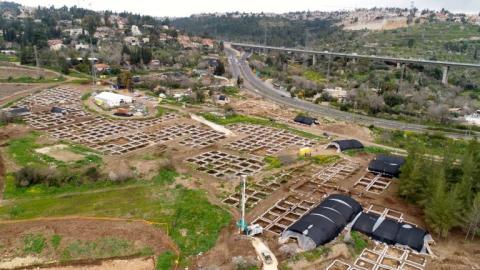Archaeologists discovered the largest Neolithic settlement in Israel
The 9,000-year-old settlement appears to have been home to 2,000 to 3,000 people and was comprised of large private buildings, public facilities, places of ritual and alleyways. Burial sites containing offerings made from volcanic glass, seashells and alabaster beads were also discovered, as well as storage sheds that testify to intensive agriculture. In addition, archeologists discovered thousands of arrowheads, pieces of jewelry and figurines produced by then-locals.
The Israel Antiquities Authority carried out the excavation near Motza, some 3 miles outside of Jerusalem. While today the area is infamous for being traffic nightmare hell, back in the day it was probably populated because of its strategic location in a fertile valley on the way from the Shefela region to the Jerusalem area. “The exposure of the enormous site in Motza awakens extensive interest in the scientific world, changing what has been known about the Neolithic period in that area,” saidthe IAA excavation directors, Hamoudi Khalaily and Jacob Vardi.
Until now, it was believed that sites of that size existed only on the other bank of the Jordan River, or at the Northern Levant. “Instead of an uninhabited area from that period, we have found a complex site where varied economic means of subsistence existed, and all this only several dozens of centimeters below the surface. All findings were recorded using an innovative three-dimensional technology, so that we can continue to research the site at the end of the excavation as well,” they added.
Naama Barak

